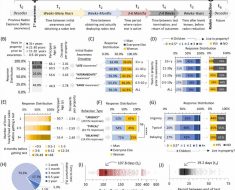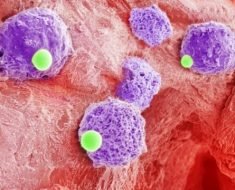TUESDAY, Oct. 20, 2020 — It may seem counterintuitive, but when someone with the eating disorder anorexia nervosa is hospitalized, treatment often begins by cutting calories. Now, new research suggests that those eating restrictions can be safely relaxed in the hospital.
Starting with a lower-calorie diet has long been thought to prevent big shifts in fluid and electrolytes that can lead to cardiac arrest, coma and even death, said study lead author Andrea Garber. She’s chief nutritionist for the University of California, San Francisco’s Eating Disorders Program.
Though this has been the practice for decades, experts suspected that adding calories might speed recovery. Plus, with current medical technology and lab capabilities, doctors can safely monitor shifts in health and adjust treatment quickly if necessary.
The study compared typical care — around 1,400 calories on the first day — to starting at 2,000 calories a day. Not only did researchers find that the extra calories could be given safely, patients getting extra food reached “medical stability” three days sooner.
“This is the first and largest randomized controlled clinical trial of these two approaches, and now we finally have good evidence to support the higher calorie approach,” Garber said.
What’s more, the higher-calorie approach led to a significant cost savings in shorter hospital stays — nearly $20,000, she noted.
Anorexia nervosa affects about 0.6% of the U.S. population over a lifetime. It is about three times more common in females than in males, according to the U.S. National Institute of Mental Health.
People with anorexia intentionally try to lose significant amounts of weight. Typically, they severely restrict their overall calories and types of foods they eat. They may also exercise a lot more, according to the National Eating Disorders Association (NEDA).
Treatment typically includes psychological and nutritional counseling, NEDA said. Depending on how severely someone restricts their food intake, hospitalization may be necessary.
The new study included 111 young people (ages 12 to 24) with anorexia nervosa or a new diagnosis called atypical anorexia. Atypical anorexia occurs in teens who are not underweight but may still have medical problems due to abnormal eating and exercise.
The volunteers were randomly placed into a standard care group that started with 1,400 calories a day or a second group that received 2,000 calories a day as soon as they entered the hospital. After that, both groups received increases of 200 calories a day.
If volunteers didn’t finish the food they were given, the uneaten calories were calculated, and they had to drink a high-energy liquid formula to replace those calories.
Those in the higher-calorie group saw a faster decline in troubling conditions, such as a slow or irregular heartbeat and low blood pressure. That led to shorter hospital stays, the study found. In the past, patients might have been hospitalized for weeks and might have lost even more weight on the restricted-calorie diet, Garber noted.
“Most kids and families want to get out of the hospital as soon as possible. They’re missing days of school and teens want to be with their friends. And the sooner they get out of the hospital, the sooner they can engage in intensive psychiatric care,” she said.
And, while finances weren’t the primary driver, cost is always a concern. Hospital charges for those in the standard treatment group averaged $57,000 compared to $38,000 for the average higher-calorie patient.
Researchers plan to follow the patients for at least 12 months to see if other differences develop.
Garber added a note of caution for families: These treatments were undertaken in the hospital, under close medical supervision. This is not something that should be attempted at home.
Dina Hirsch, a senior psychologist with the Center for Weight Management at Northwell Health’s Syosset Hospital in New York, reviewed the study.
“These findings are critical in helping to establish evidence-based treatment guidelines for treating anorexia in adolescents,” she said. “Not only does the more rapid weight restoration process lead to better clinical results, it may also improve patient satisfaction and set them up for success in outpatient treatment.”
Giving more food in the hospital also helps families once outpatient treatment begins. Patients may need 3,000 calories a day or more as they recover. Without any experience with higher-calorie eating, patients and parents may regard that as an impossible goal.
“But the experience of doing so in the hospital may give parents the confidence needed to continue to provide such meals and insist upon their completion post-discharge,” Hirsch said.
The findings were published Oct. 19 in JAMA Pediatrics.
Source: Read Full Article





